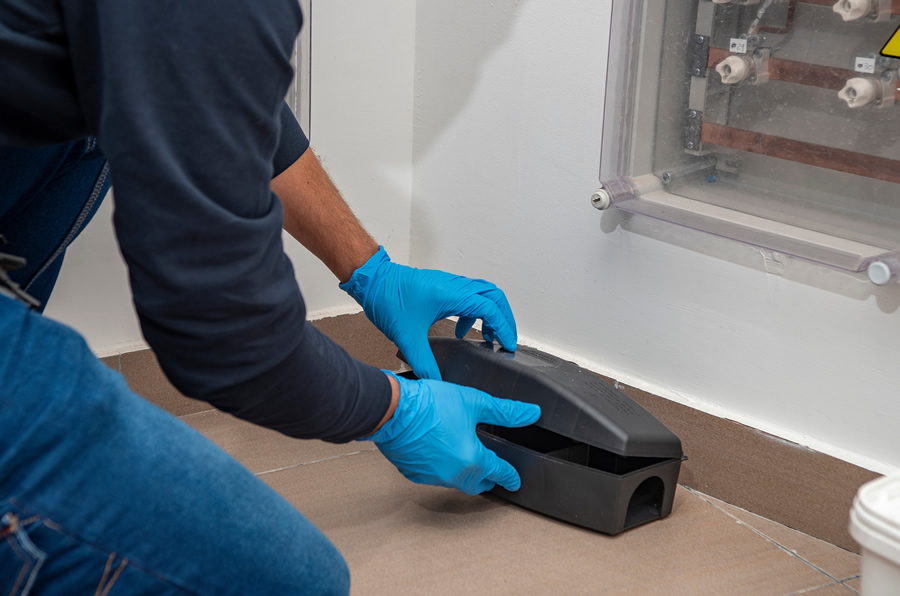Physical Address
304 North Cardinal St.
Dorchester Center, MA 02124
Physical Address
304 North Cardinal St.
Dorchester Center, MA 02124

Pests like roaches, ants, termites, and rodents can infest homes and become a nuisance. More than a nuisance, they can damage property, contaminate food, and spread disease. Keeping pests under control is critical for protecting your home and health.
The most common household pests include:
Catching infestations early is key to effective pest management.
Preventing pests involves denying them access, food, water, and shelter:
In combination with Pest control methods, prevention keeps homes safer and more sanitary.
Pesticides are formulations of chemicals designed to kill or deter pests. Several types are available:
Insecticides kill roaches, ants, termites and other insects. Rodenticides poison mice, rats and other rodents. Products come as solids, baits, dusts, and spray concentrates. Some provide immediate knockdown while others require the pest to return and feed multiple times.
Research active ingredients to select the most effective and least toxic pesticide for your needs. Gels, baits, and bait stations keep the poisons enclosed and safer around children and pets. Follow all label precautions exactly. Using too much or too little makes them less effective.
Improper use can danger people, animals, and the environment. Apply only according to need and regulations.
Physical and mechanical methods physically block, trap, crush, or kill pests without chemicals.
Traps employ snap traps, glue boards, light traps, or pheromones to lure and catch pests. Once trapped, dispose of live pests by freezing before tossing them in sealed bags in outdoor bins. Clean or replace traps between uses.
Seal all possible pest entryways into the home with weatherstripping, caulk, steel wool, and screens. Barriers prevent access to shelter and food sources. Copper mesh placed at points of entry deters slugs and snails as well.
This old school approach works great on large slugs, snails and worms around the exterior. Simply pick them off plants and ground then toss into soapy water or sealed bags for disposal. For spiders just utilize a broom or vacuum hose. Boiling water kills weeds. Pull out roots to prevent regrowth.
Biological methods leverage natural enemies, plants and microbes to control populations.
Attract natural predators to the yard like birds, spiders, ladybugs, praying mantis and reptiles. Don’t harm those that arrive, so balances continue. Introduce additional predators like nematodes to destroy ants and imported parasites for problematic plants like scale and aphids.
Naturally occurring bacteria like Bt (Bacillus thuringiensis) kill caterpillars eating leaves. Commercial formulas contain fungal spores that attack soft-bodied insects like whiteflies. Apply directly on plants according to product instructions.Diatomaceous earth (DE) made of crushed marine phytoplankton skeletons destroys soft-bodied insects and larvae on contact. Spread DE powder where slugs and ants travel. Avoid inhaling it.
Scientists identify genes that produce toxins fatal to insects like mosquitoes. They genetically alter organisms integrating pesticidal traits then release them. Future GMO solutions show promise for pest control.
Integrated Pest Management (IPM) combines prevention, exclusion, traps, poisons, and maintenance for sustainable control.
Inspect interiors and exteriors routinely seeking pest evidence like droppings and damage. Send photos to specialists for identification if signs discovered. Correct conditions attracting pests.
Use multiple methods like traps, insecticidal dusts and bait stations rather than relying solely on pesticides. Layer tactics for enhanced effectiveness targeting all life stages.
Deny access, shelter and food plus modify landscaping. Keep plants healthy and areas free of standing water and debris. Maintain sanitation. Continual effort prevents recurring issues.
Extensive pest challenges require getting professional pest control companies to assist.
Qualified companies assess situations, identify intruders down to the species, make plans then implement solutions. Technicians utilize appropriate integrated methods for established infestations and prevention. They know what products work best for each species and situation.
Reputable companies hire certified, licensed technicians who received training on inspecting premises and regulating safety procedures. They comply with state and federal regulations regarding applications.
Confirm companies arrived at your home have insurance, licenses, train technicians and stand behind service work. Protect yourself, family and home by selecting insured, licensed and competent providers.
Neglecting pest control jeopardizes health and homes allowing destruction and contamination. Combat issues integrating prevention, traps, poisons, maintenance and professional assistance for freedom from invaders. Consistent monitoring and effort helps ensure homes stay pest-free for family safety and peace of mind.
Integrated Pest Management utilizes multiple tactics minimizing reliance on pesticides for the safest protection. Prevention and monitoring paired with targeted applications of pesticides, traps and maintenance makes this a responsible choice.
Read all precautions before purchasing and applying any pesticidal products. Follow directions exactly as stated on labels. Place enclosed bait stations instead of exposing gels or dusts. Never utilize outdoor formulas inside. Ventilate treated areas appropriately. Call professionals rather than risk mishaps working with concentrated chemicals.
Avoid harming pollinators like bees, butterflies and ladybugs that support the ecosystem despite being insects. Allow helpful natural predators to remain as they organically reduce pest populations around your landscape and garden. Identify insects before spraying, swatting or removing them.
Improper identification and ineffective methods amplify pest issues. Professionals mitigate likelihood of infestation escalation through proper identification, evaluation, solutions and monitoring specific to your situation. They know details from species traits to regional regulations most homeowners lack. Let the experts handle challenging pest problems for you through IPM.
Interior and exterior inspection at least every other month assists catching issues early before populations explode. Maintain prevention habits like sealing gaps, clearing debris and managing moisture year-round. Address occasional invaders promptly. Where evidence exists, implement containment solutions right away whether DIY traps or professional elimination. Monitor results adjusting approaches accordingly. Remain vigilant.